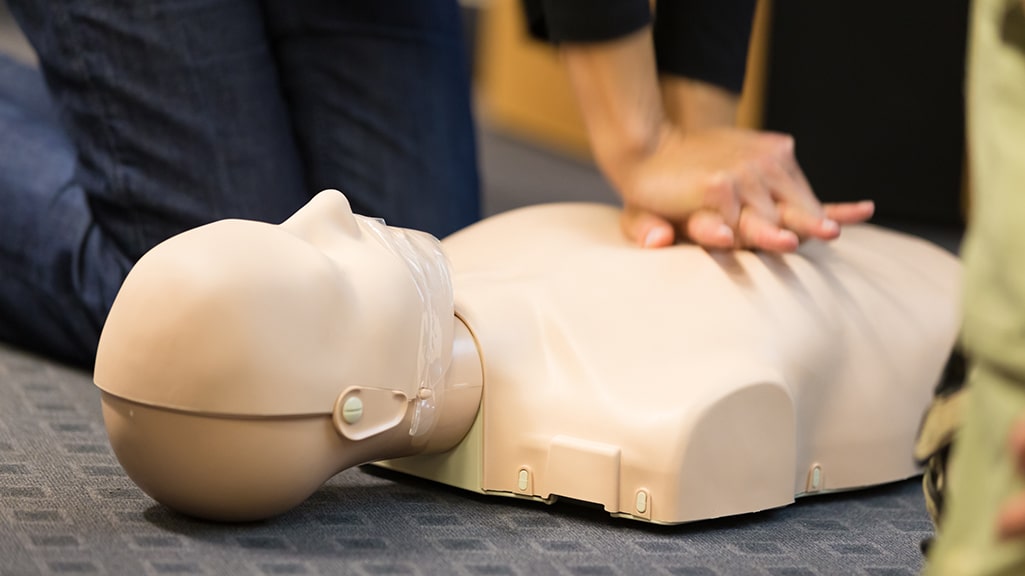Are You Prepared To Handle In-Flight Medical Emergencies?
Few issues are as alarming to passengers and concerning to crew members as an in-flight medical emergency. With no way to get assistance from first responders while airborne, flight crews must be capable of delivering emergency care until the aircraft can land safely and first responders have arrived.
As with any aspect of aviation, handling an in-flight medical emergency—affecting passengers or crew members—requires knowledge and preparation.

In-Flight Health Crises: Preparation and Training Are Essential
Every medical emergency is unique and affected by many factors, such as the person’s age and overall health, the medical issue and proximity to an airport and first responders. However, the actions below are useful in preparing for and addressing any health crisis.
Before you are airborne:
- Obtain education on medical emergency management. Every crew member should understand how to respond to a health crisis. Having simple first aid skills is helpful, but more advanced training can increase the crew’s competence and confidence.
- Train regularly for in-flight medical emergencies. Pilots are familiar with the “startle response” that occurs if they lose control of the aircraft. Flight crews that haven’t practiced responding to various health crisis scenarios can have a similar response. Training on what to do if, for example, someone suddenly loses consciousness can help crew members respond immediately and correctly to an incident.
- Confirm that medical supplies are onboard before every flight. The supplies that may be needed vary based on the flight destination and duration, number of passengers and other factors. But a flight crew member must ensure that the required medical devices and materials are onboard. This may include supplies for addressing cardiac emergencies, airway and ventilation support, IV administration, allergic reactions and anaphylaxis, diabetic emergencies, laceration care and other medical emergencies.
- Develop escalation thresholds. In some cases, seemingly minor medical issues evolve into something more serious. Failing to recognize and respond to the change can increase the person’s risk of a negative outcome. Therefore, it is vital to develop a response process that covers everything from minor wounds to life-threatening injuries or conditions.
When airborne and a crisis arises:
If an airborne medical emergency occurs, crew members should take these steps:
- Notify other crew members. Often, someone will alert a crew member that they are having or have observed a health crisis. The crew member must relay the news to others, including the cockpit crew, so that everyone can work collaboratively to execute an effective response.
- Assess the situation. Is the person conscious and able to describe their condition? If not, are they breathing, and do they have a detectable heartbeat?
- Ask if there are doctors, nurses or other medical personnel on board. If the person is experiencing a severe medical emergency, determine if there is a medical professional who can assist in diagnosing it and recommend a course of action.
- Provide treatment. To whatever degree is advisable and possible, address the person’s medical crisis.
- If appropriate, recommend a diversion. The person’s condition and the flight’s proximity to its planned destination will determine whether it is important for the pilot to divert to the nearest airport or another safe landing strip where emergency services can be available. However, other considerations affect this decision, such as whether the aircraft is at a safe landing weight and the weather conditions at possible landing sites.
- Alert authorities if emergency services are needed. If the stricken individual will require emergency treatment after the aircraft touches down, contact local authorities to request medical assistance.
- Inform other passengers about the situation. Without going into specifics about the medical emergency or the person’s condition, tell passengers what course of action has been selected and encourage them to remain seated and calm.
Emergency Medical Assistance and the Law
It is beyond the scope of this article to make statements about the legal issues surrounding flight crews providing emergency medical intervention. However, some crew members may be concerned about liability in this type of situation. Consequently, it is advisable to research the pertinent rules and regulations and summarize them for flight crews.
But generally speaking, U.S. laws tend to protect flight crews who administer emergency care in a reasonable manner from liability. International flights operated by international organizations may be bound by different rules.
FAA-Mandated Medical Supplies
To ensure that flight crews have the items they need to address in-flight medical emergencies, the FAA has mandated that aircraft carry specific items. You should consult the FAA resource that is pertinent to your situation.
Keep in mind that FAA guidance is subject to change, so you should stay informed about any updates.
Be Prepared To Handle In-Flight Medical Emergencies
Most aviation professionals will experience at least one in-flight medical emergency during their career, and probably several. Those events can be highly stressful to flight crews and passengers. Or, with proper training and preparation, the crew can handle them with a calm demeanor, which benefits everyone involved—passengers, crew members and patients.




